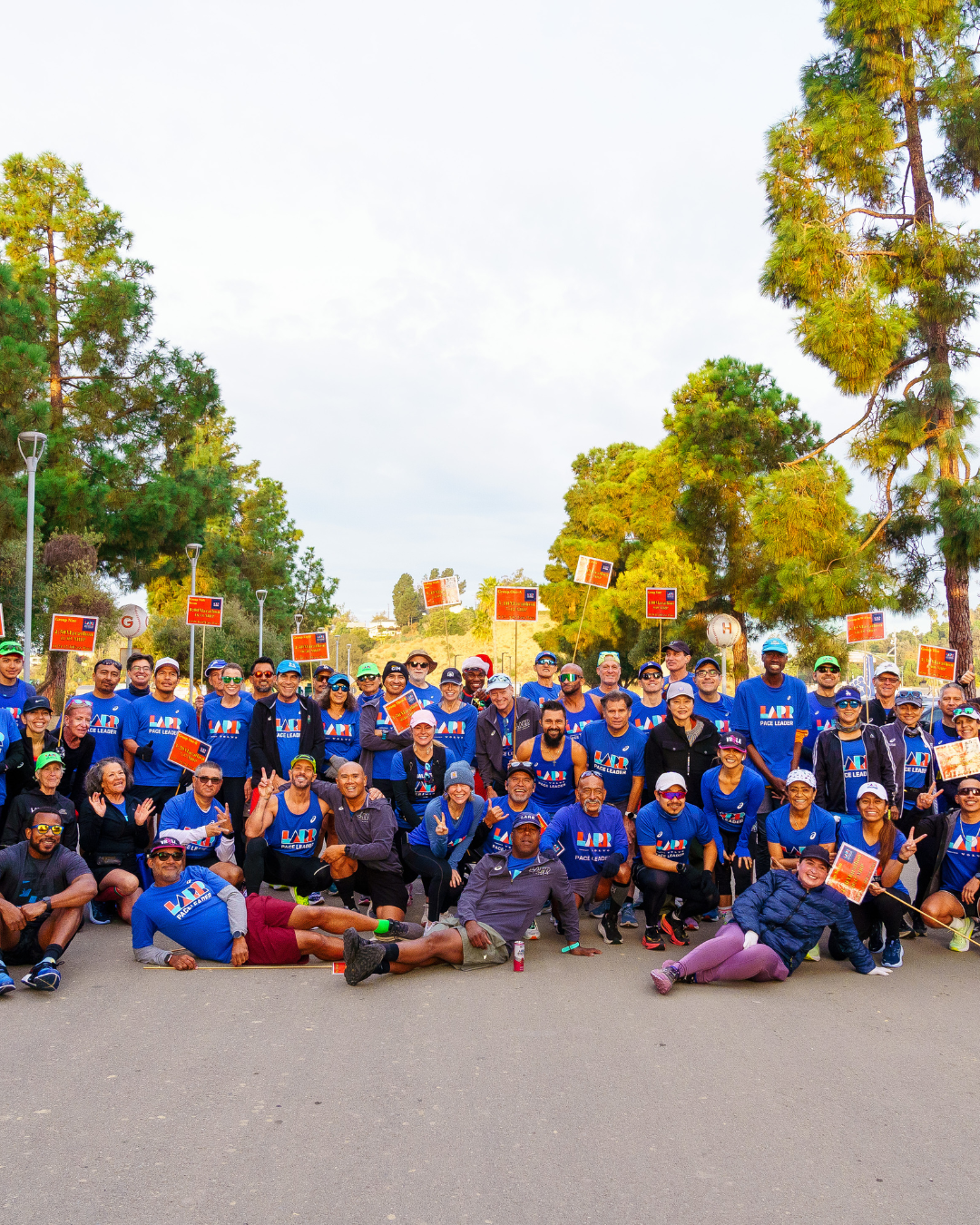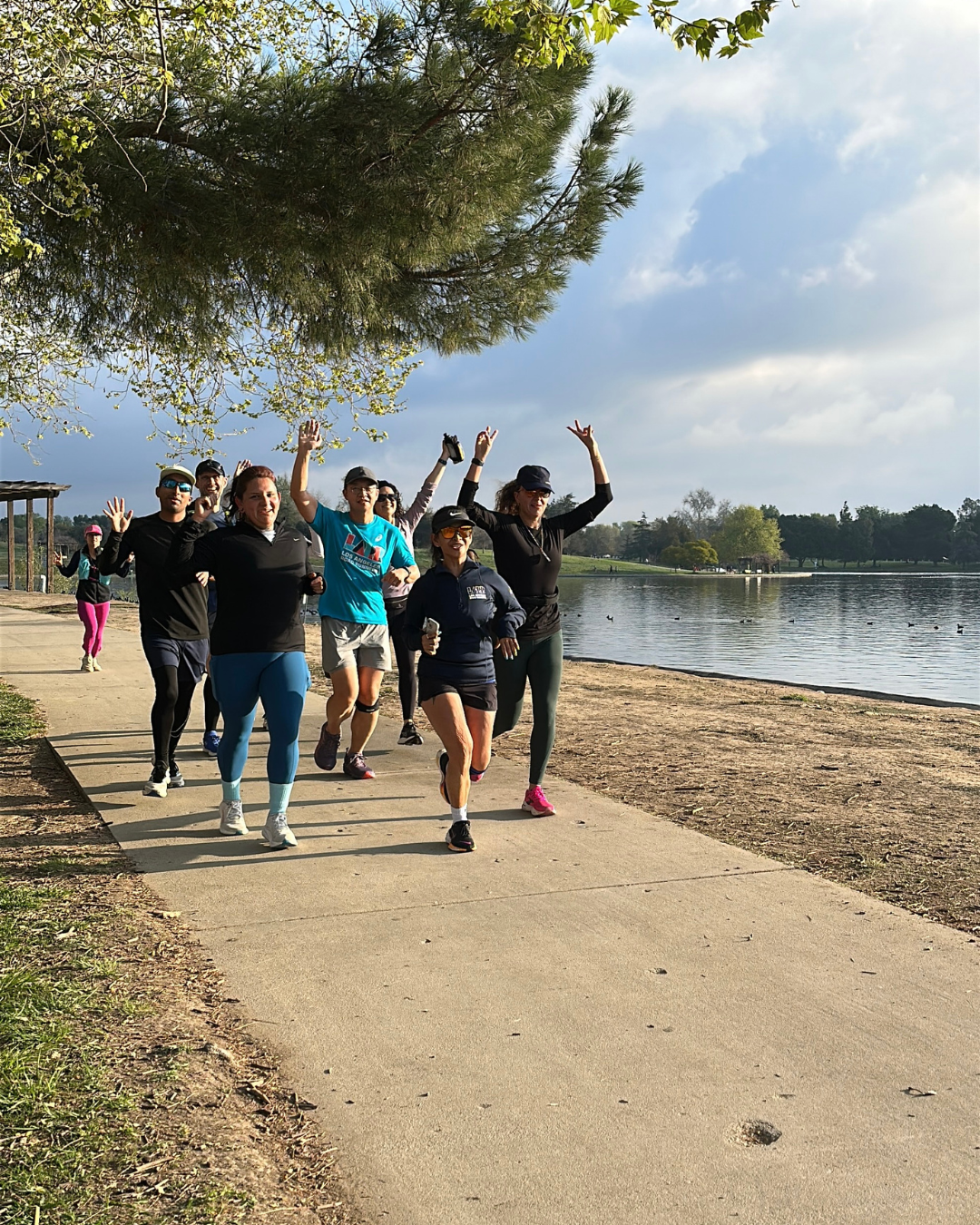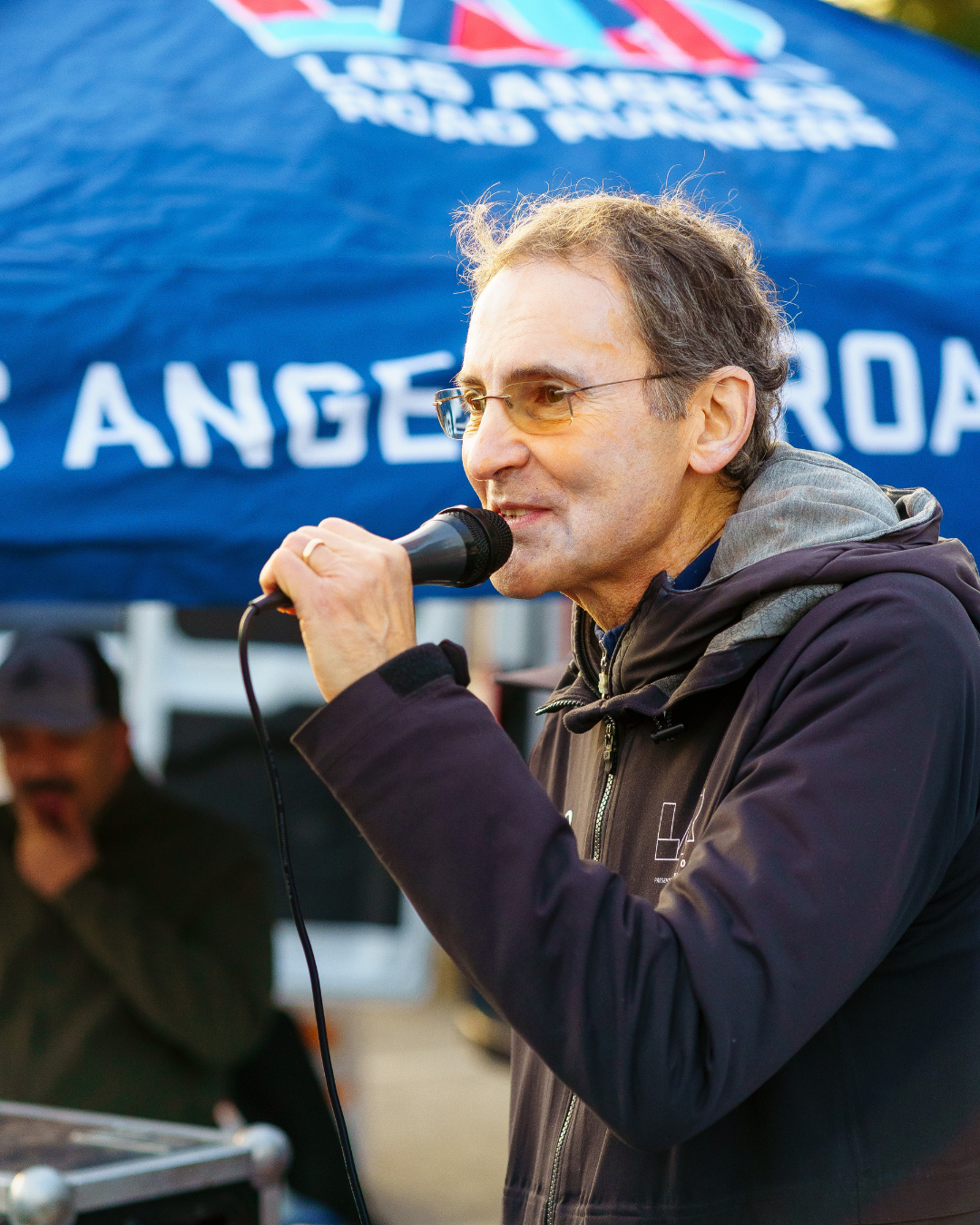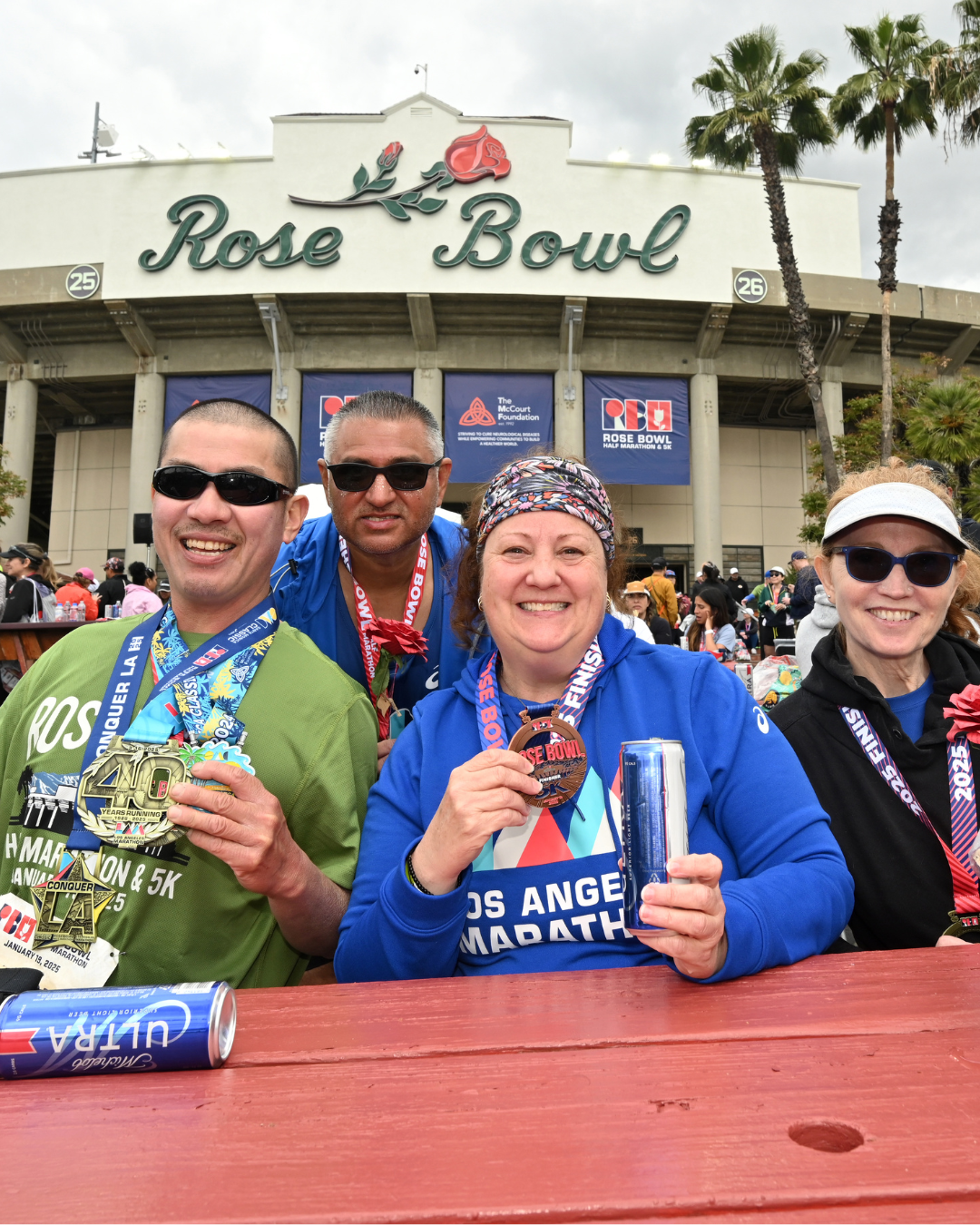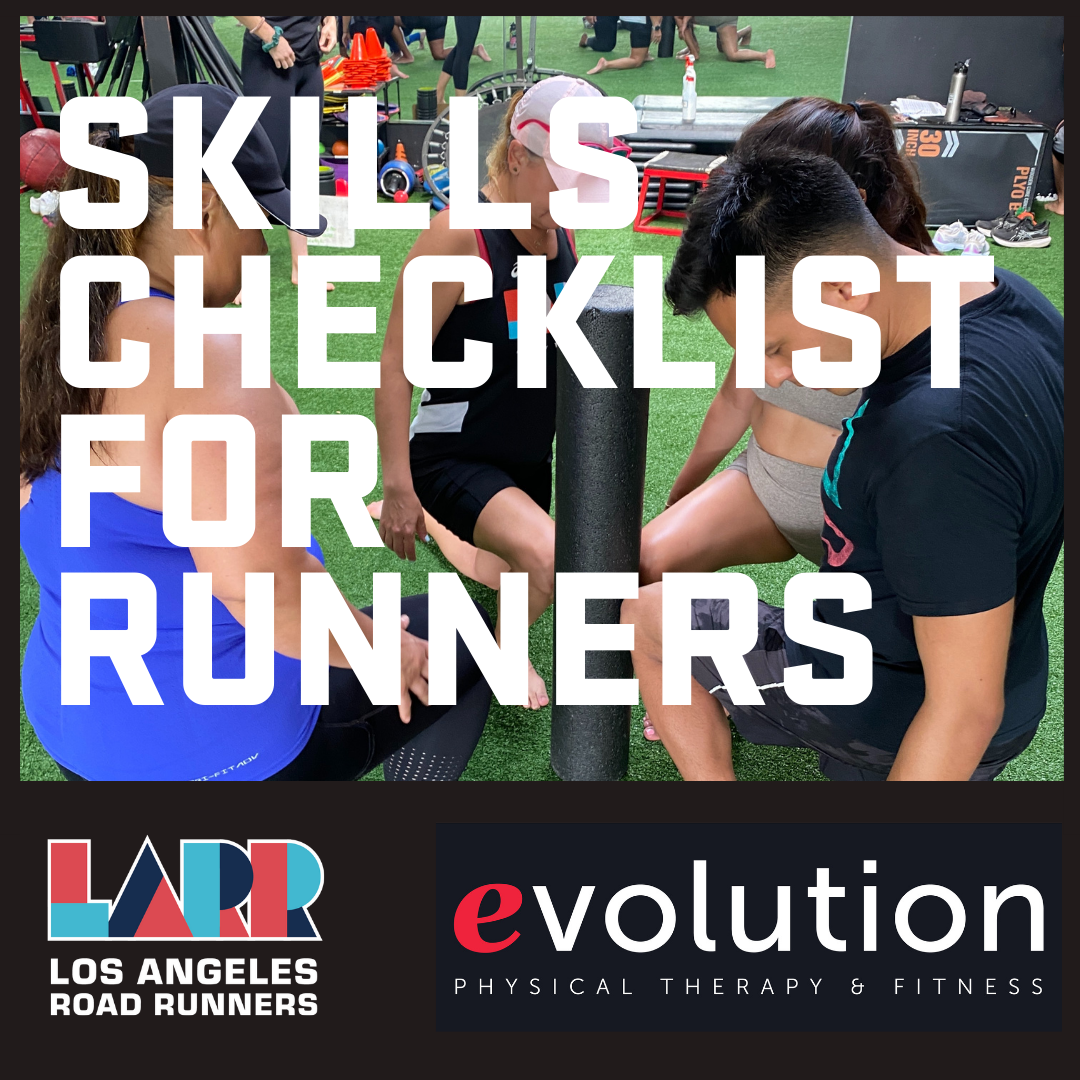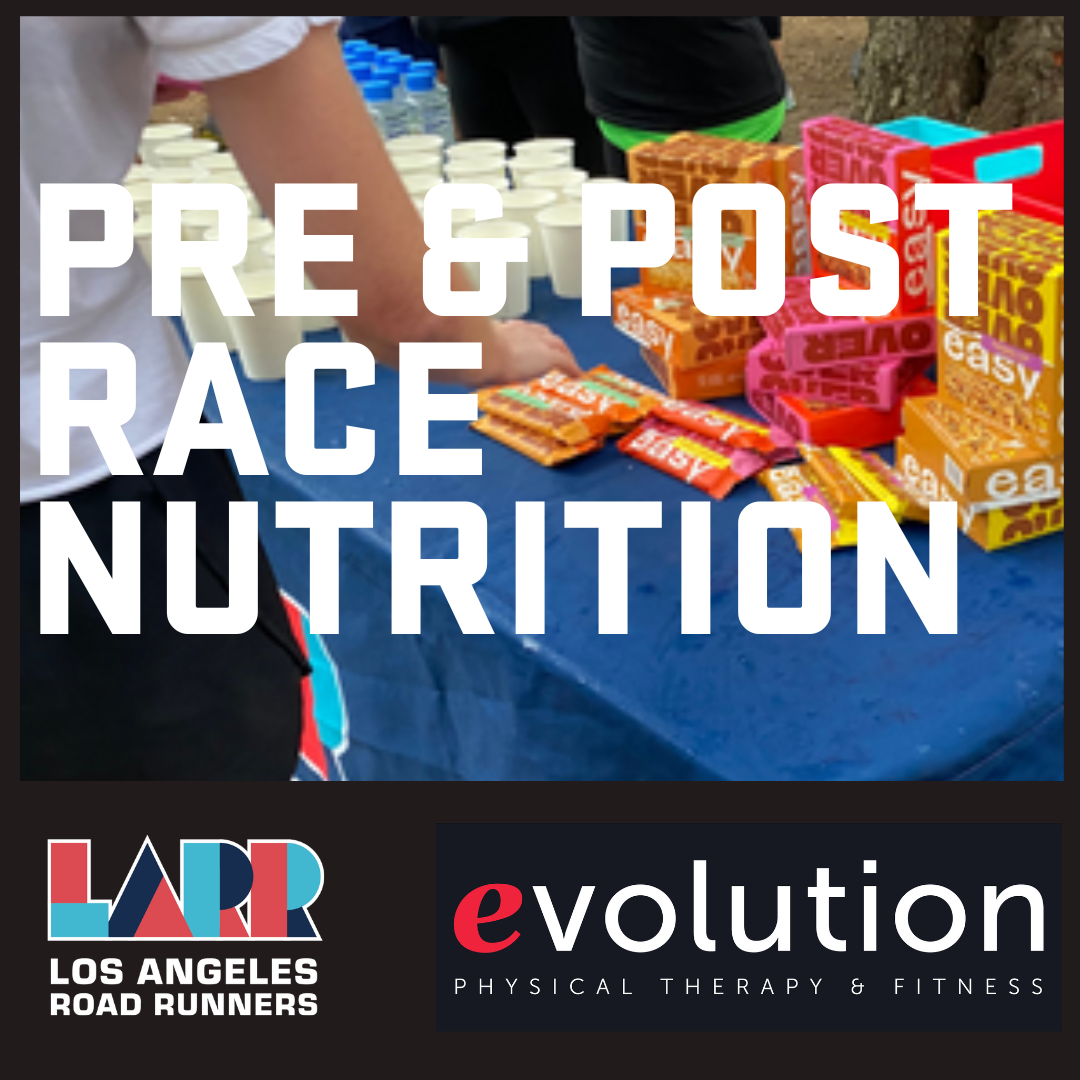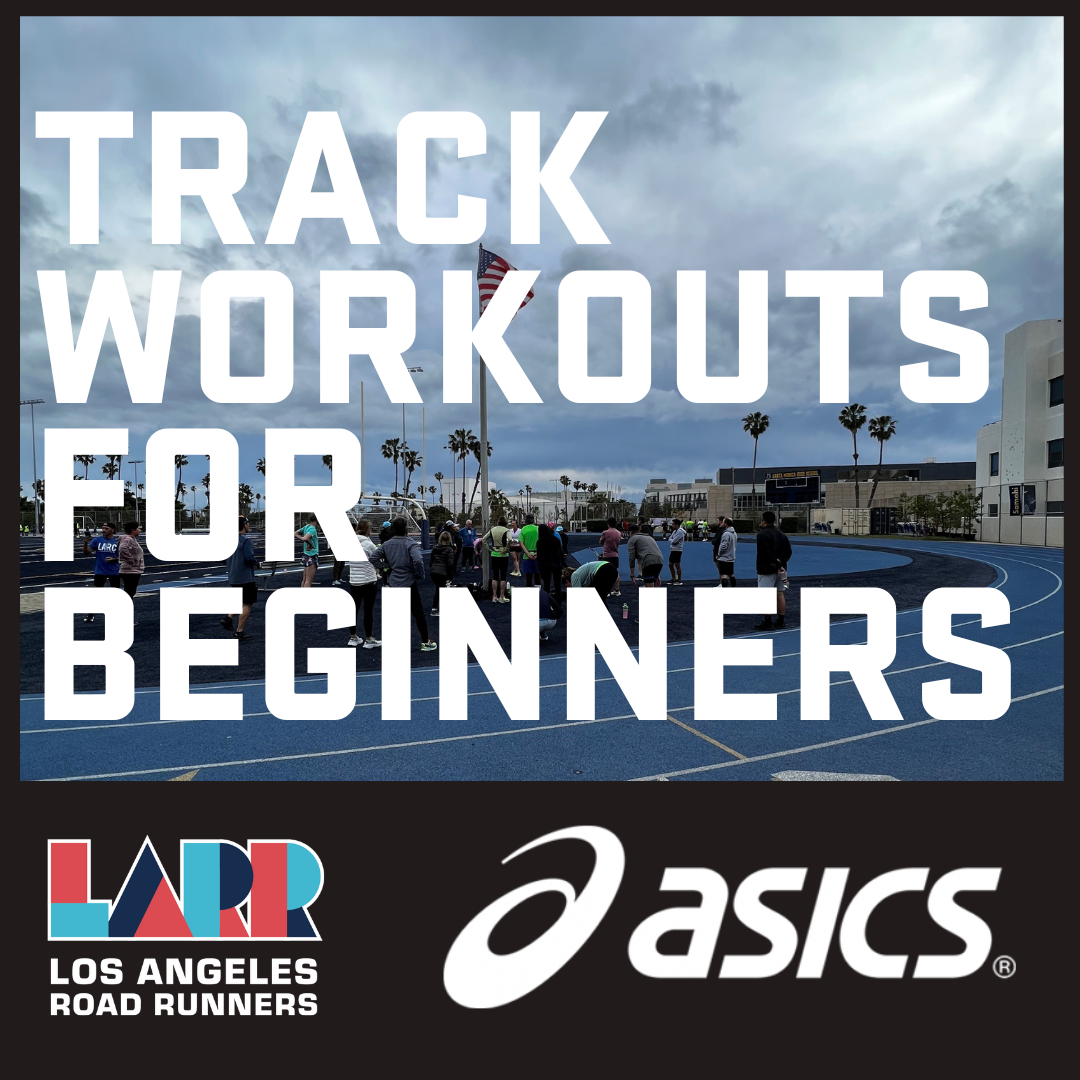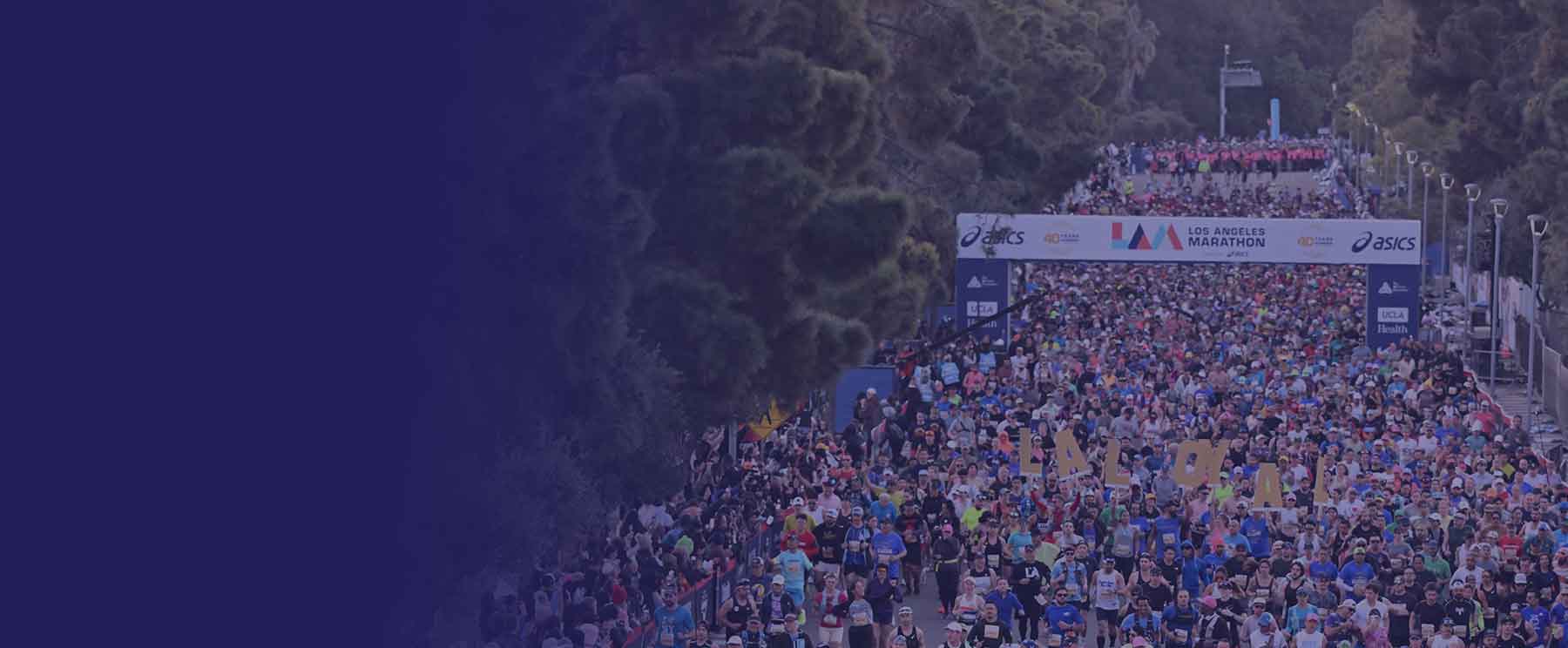
LA Road Runners
In-Person Training Program of the ASICS Los Angeles Marathon
LA Road Runners Training Resources
![]()
For over 30 years, the LA Road Runners program has been helping athletes of all levels train for the Los Angeles Marathon. Whether you're a first-time runner, a seasoned marathoner, a walker, or a run/walker, we’re here to support your goal.
We offer a range of free online tools and resources to guide your journey—from training plans and newsletters to expert advice on nutrition, pacing, and race-day logistics.
LARR is here to support your journey, no matter where you're starting!
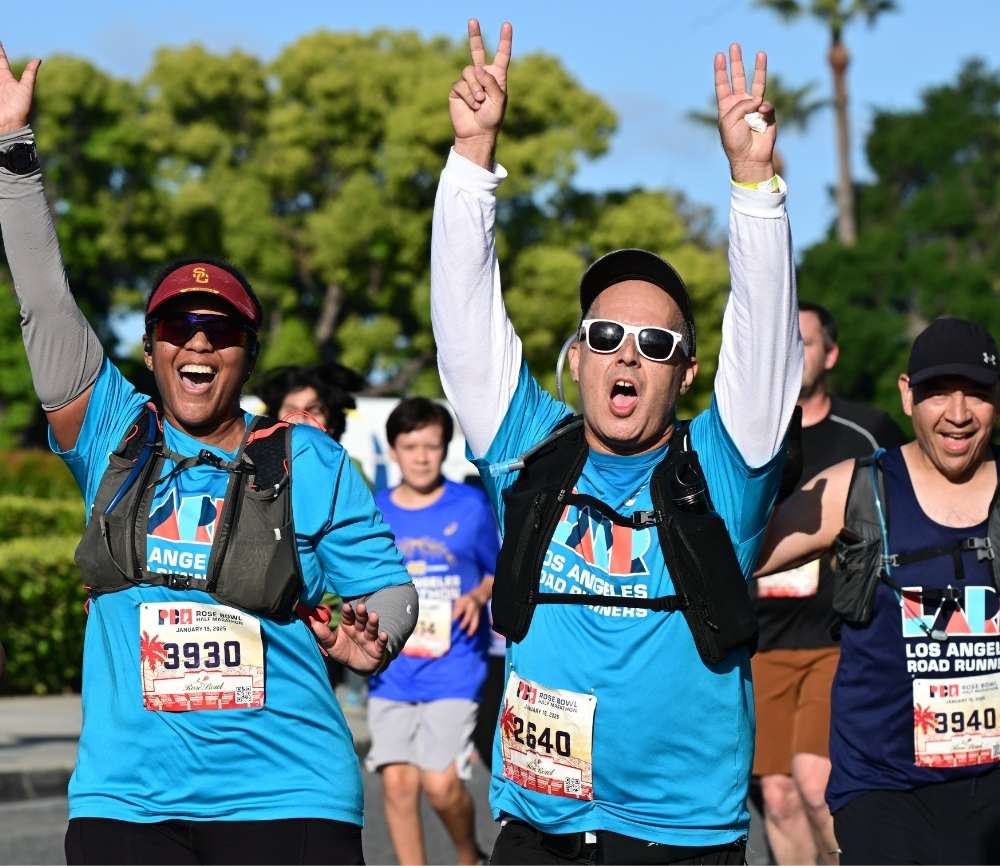
Training Schedules

LA Road Runners (LARR) trains and supports those who wish to participate in the Los Angeles Marathon, Santa Monica Classic, and the Rose Bowl Half Marathon through training programs, expert coaching, social events, information sharing, and coaching tips. Below you'll find downloadable training plans for McCourt Foundation races.
The ASICS Los Angeles Marathon will be held on March 8, 2026.
LARR's Coach David has created training plans for Levels 1-5. Plans are 26 weeks and kick off the week of September 9.
The Rose Bowl Half Marathon will be held on January 18, 2026.
COMING SOON! LARR's Coach David will develop plans for Levels 1-5. Plans are 19 weeks and kick off the week of September 9.
The LA Charity Half Marathon will be held on March 8, 2026 as part of the ASICS Los Angeles Marathon.
LARR's Coach David has created training plans for Levels 1-3. Plans are 16 weeks and kick off the week of November 17.
The Santa Monica Classic 5K/10K will be held on September 7, 2025.
LARR's Coach David has developed plans for Levels 1-5. Plans are 8 weeks and kick off the week of July 14.
Articles and Newsletters
LARR Newsletter Archive
![]()
Throughout the training season, LARR delivers training tips, news, and updates to your inbox on a weekly basis. Sign up for join our mailing list or find past editions archived here one week after their original delivery date.
- Orientation Week - 9/9/25
- Week 2 - Find a Training Plan 9/16/25
- Week 3 - How to Fuel your Training 9/23/25
LARR Online Coach Chat Recordings
![]()
Join the Online Coach Chat with Coach David every Thursday at 6:30pm from September 4 to March 12. Sign up for the LARR newsletter to get information about the topics and the link.
Visit our YouTube Channel for recordings of past chats
- LARR Membership Orientation (with program coordinator Lucie Murray)
- How to Choose a Training Plan
- How to Fuel your Training - with Runner Girl Dietitian Serena Marie (recap doc)
- 15 Minute Strength - with Dr Jess
To figure out your easy pace - go for about 20 minutes comfortably. Listen to your breathing and keep it steady. You should be able to talk without noticeable pauses for breathing. That is your Easy Pace and most (80-90%) of your training should be done.
For speed work, you'll see our training schedules use MRP (Marathon Race Pace), HMRP (Half Marathon Race Pace), T-Pace (Threshold), R-Pace (Repetition), and I-Pace (Interval). You can find definitions of these paces here. You'll need to run a race or do a 1 or 2 mile time trial to figure out these paces. We'll talk more about paces during the season.
We endurance athletes primarily use fat and carbs (glycogen) to run or walk. More fat is used at lower Heart Rate; more carbs at higher HR. All humans have way more fat as a resource for fuel. How do you train the more abundant resource (fat), used more at lower heart rate? Slow down. Most of our training (80% or more) is “endurance,” zone 2, “Easy” training. Meaning we are training our fat burning engine to be more efficient. It is all about training energy systems, fat and carbs – low or high HR
LA Marathon is a road race and is hilly so it's good to train on the road, however, you can mix it up though with some trail runs and track workouts to keep things interesting.
Hills build strength and strength is good - especially when you get ready for the LA Marathon. You can add some hills once or twice a week. Much of training on hills will be too high a heart rate. Slowing way down on an uphill is good as it enables aerobic (low heart rate-Zone 2) training, which is most of what you need. If you feel a bit beaten up, take time off hills.
Both! You can even vary “Easy” efforts to mix it up or split one workout into two so you have an AM and a PM workout.
Everyone has different circadian rhythms, meaning they have more energy at different times, and different life schedules to manage. That said, do some workouts at the same time as your race. The LA Marathon is at 7AM for so LARR meets and trains at that time.
After about an hour we all need to drink but the volume needed is different for everyone. In real general terms, you need about 4 to 8 ounces of water every 10 to 20 minutes. Heat and intensity will impact this, as you sweat more.
Electrolytes (minerals such as sodium, potassium, calcium, magnesium, etc.) are important for neurological function. In addition to that, sodium aids hydration absorption. If you are a heavy sweater, with white lines on your shirt and face after your run, then you need more. Electrolytes can be found in most gels and energy drinks such as Electrolit, so add up how much you are taking. We all have different needs. And on a hot day, with more sweating you need more electrolytes. (Be careful not to use too much sodium if you have high blood pressure)
After about an hour of effort, we benefit from replacing used sugar stores and minerals (electrolytes) found in gels. Early season, it is good to use fewer gels and train your body to use fat more efficiently. Test gels at MRP (Marathon Race Pace), to see how well you digest them - you want to find a brand and flavor that agrees with your stomach.
On Race day, you'll need carbs and electrolytes. GU (the brand that will be on course at the LA Marathon) and most gels have about 22 – 23 grams per gel. Depending on your needs, you can expect to need about one gel every 45 minutes, with a few cups (about 4 ounces) of Electrolit (the electrolyte drink found on course) per hour. Beware that more than 60 grams of carbs per hour may make you feel nauseous so keep an eye on how much you're consuming.
We all need a balance of macronutrients (Carbs, fats & proteins). Miss out on not getting enough of any one and we are hungry. Make sure you get enough protein to rebuild muscles and carbohydrate to support long mileage. Consult a nutritionist if you need help understanding your individual needs.
On longer efforts late in the season you are using way more calories and need to take in more. Also, you have recruited more muscle fibers to fire, late season. This means you are using more general calories during rest.
Note that sometimes being dehydrated is mistaken for being hungry. Make sure you're drinking enough water.
No worries. It is not about one longer run, it is about the total volume (amount of mileage). Some pros do not have a longer effort (run or walk). If you miss a long run and are still two weeks or more from the race, add a few miles to your next few efforts (just don’t add too much to any single effort, as to risk injury). If it's close to race day, trust your training and don't worry about squeezing in extra miles.
Please take time off if sick. Training when sick can make things worse and it's not going to impact your training too much to rest. Don't try to "make up" missed miles - simply pick up the schedule. If you have to miss two weeks, don't panic. Build back slowly and don't jump right back into your workouts.
“Heal first and train second.” You will not have your most worthwhile training if injured and you risk making your injury worse. If you feel pain, at all, your body is telling you the injury is getting worse. Try to figure out what caused the injury so you can address it - not enough rest? the wrong shoes? not enough stretching? Consider seeing a doctor if the pain gets worse or impacts your daily life. Return to training slowly.
Shoe wear and tear is quite an individual thing. Most running shoes will last 300-500 miles or 6 months, but it depends on each persons weight, stride, and pronation. Generally, if you see creases on the side and wear on the bottom, and you feel a bit more beaten up than normal, then it may be time for new shoes.
Invest in a good pair of shoes that is right for your foot and gait. Visit a specialty running shoe store – you can even demo shoes at certain events (like ASICS at the LARR Meet Ups). Avoid wearing your running shoes for every day activities as they can wear out faster.
Remember, a good athletic shoe shouldn’t have to be “broken in”. Please don’t wear a shoe that feels uncomfortable!
Go for about 20 minutes comfortably. Listen to your breathing and keep it steady. You should be able to talk without noticeable pauses for breathing. That is your Easy Pace and most (80-90%) of your training should be done.


